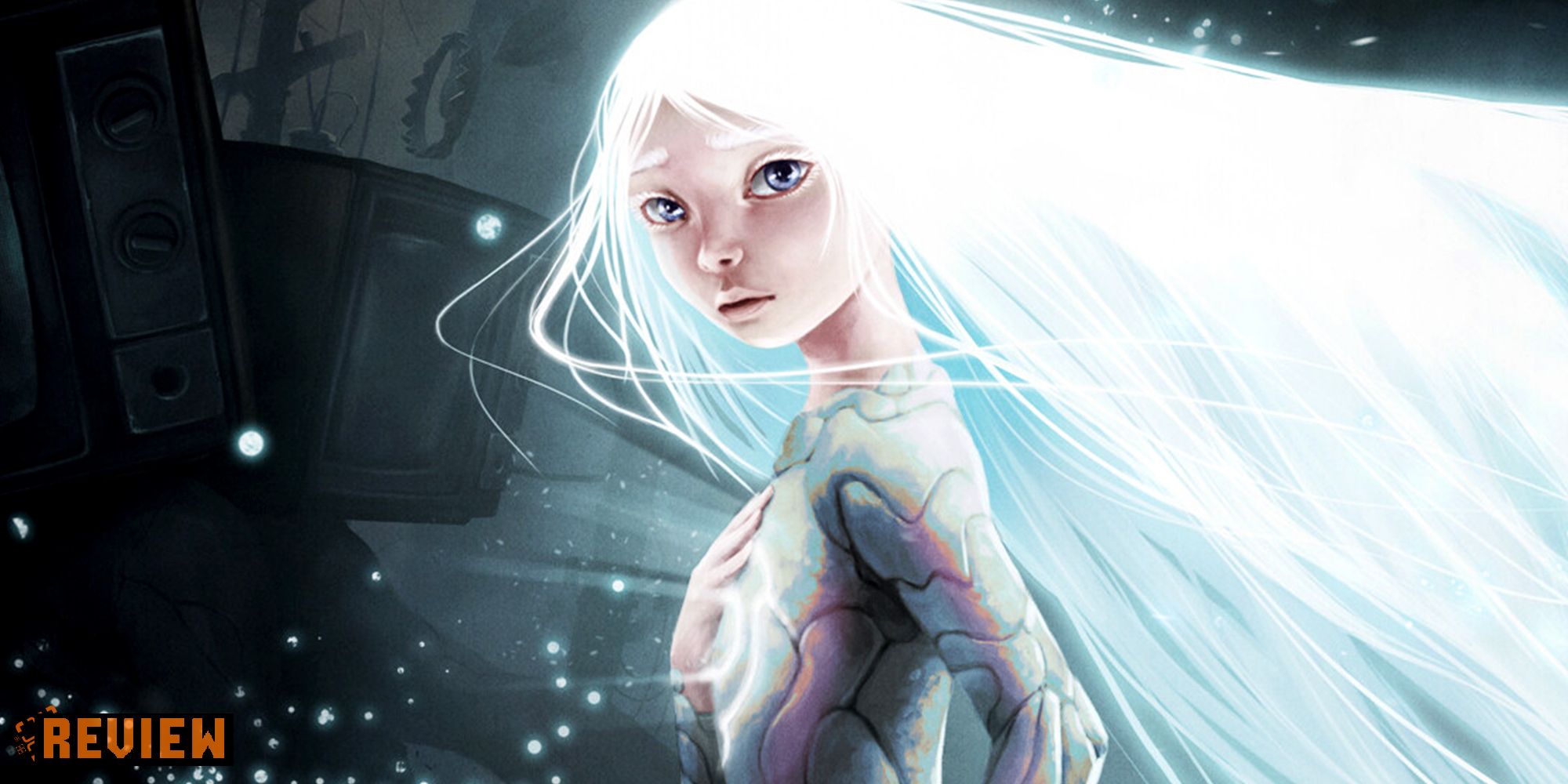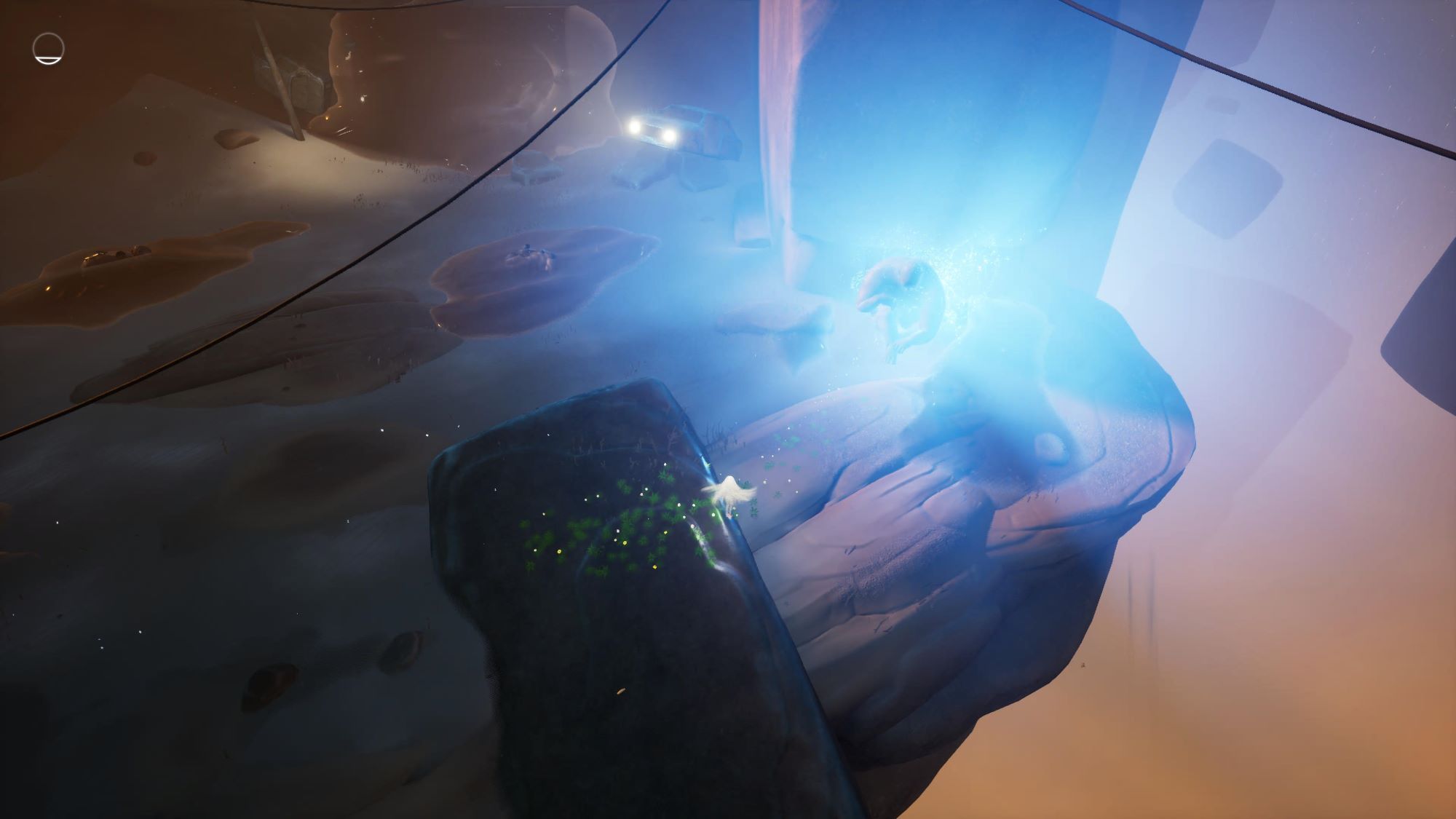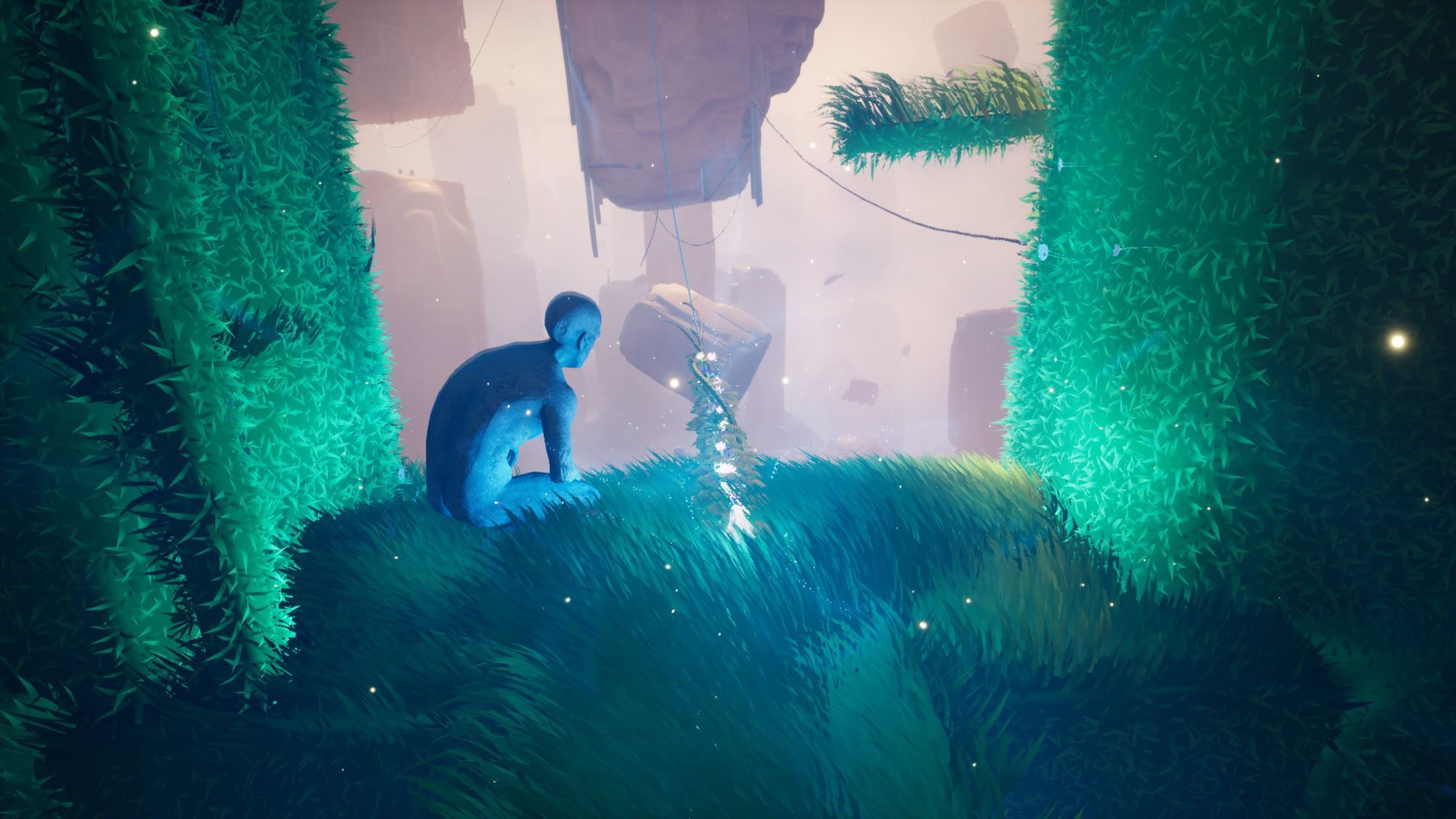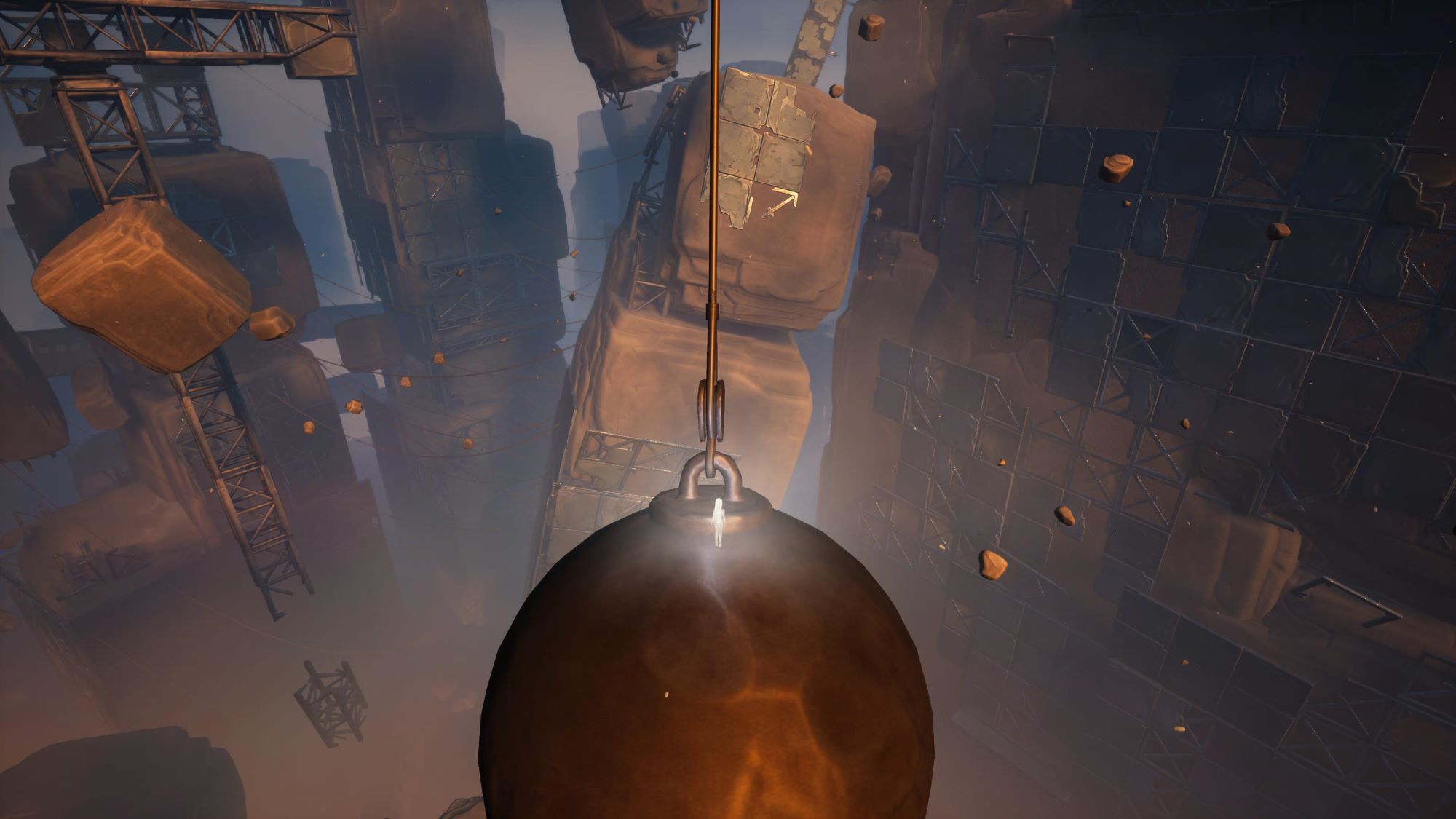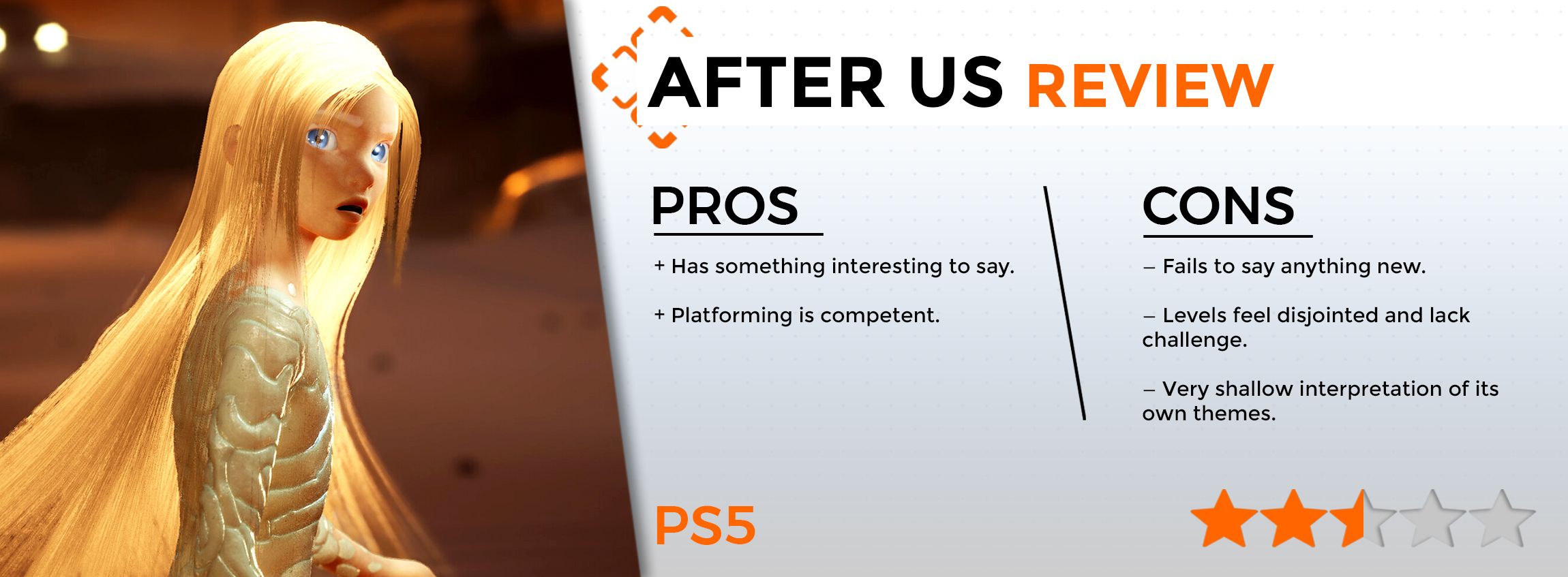Video games don't always have a lot to say. They may have characters that go on epic struggles or a mighty quest of good versus evil, but on the whole, they comment on the world around them far less than cinema does. That's why it's so refreshing to play a game like After Us, and so disappointing that it cannot carry out its vision. A platformer set against the backdrop of a world turned to ruin, it wants to speak up on issues with the modern world but rarely musters an original thought, while using gameplay as little more than thin glue to hold these trite observations together.
There are a series of eight levels in After Us, which can be played in whatever order you see fit. You start with the Dog level, and from there unlock three more, and whichever one you choose then unlocks others, which eventually all link up. This open structure is immediately to the game's detriment, as it takes you back to a hub after completing the prologue, where I spent over an hour wandering around trying to figure out where to go next. Each level is represented by a constellation here, so I assumed it held a secret. Instead, I was meant to return to the prologue and head in a different direction.
More than that, which could be chalked up to my own stupidity, it limited progress. Levels never really get harder or longer or more complex, and their narrative never combines either. These are essentially eight different levels on the dangers of pollution, but they never trust you to have learned from the previous ones. For all the ethereal, wordless storytelling, all it amounts to is pollution being a bit sad innit.
The gameplay is the same across each level, wrapped up in some loose themes. You jump between floating platforms and climb walls, but the route is linear and the hazards few. If you miss a jump, it will likely be due to having stopped concentrating on the repetitive task, and while the levels have splashes of colour at starting points, most of them are washed in grey throughout, leaving little to occupy your mind.
Take the Antelope level. We see a thinned out forest where we must jump from rock to rock, and bear traps float in the air. If you step into one, it grabs you, then you escape. There's no actual damage in the game, you see. A couple of things will one-hit kill you, like the occasional hunter's bullets in this same level, but they'll start you immediately where you left off or, often, a couple of beats ahead so you never have to feel challenged. My most common death came from jumping to a platform and landing successfully, but the game decided it was too far away so the screen went black.
Each of the levels has a similarly rote representation of its overall point. The level based on a bird just had cages and feathers everywhere. Sometimes the cage had no roof, and stepping inside caused one to grow, at which point a simple button tap would make a gap. This was the basis of all the puzzles in the level, and while you sometimes were in a cage within a cage, or on top of a cage, or a cage turned sideways, the solution was ‘push one button’.
It's also worth noting that for a game so reliant on imagery, some of it felt out of place. For example, the game has statues of humans, some of which contain collectibles, some of which swarm and attack, most of which are just statues. These statues are naked (and then often morbidly obese) which gives them a grotesque look which again feels like a cliche. Humans are rotten, wasteful, gluttonous creatures who pollute out of selfishness and idle stupidity is just a glib interpretation. It might be correct but we've seen it many times before.
One level shows these statues distracted by television screens all displaying typical, if true, reasons for humanity's ruin, like fast food, excessive property development, and the wastefulness of flights. But one of these is tickets for a show, which seems to suggest humans are bad because we enjoy art? These also seem to criticise individual choices to a fault, and for a game so thin on anything fresh, people will pick holes. Aside from the Pig level, which went after factory farming, the game places the blame for the world on regular citizens over corporations. A little credit for the Bee level, however, as the death of bees is an often overlooked consequence of pollution, and made the level worthwhile despite the gameplay just being pretty basic jumping and climbing.
That's After Us' main issue. The gameplay is nothing special, and it isn't particularly trying to be. It exists as a framework to tell a story, and plenty of games have excelled with that mindset. But all it has to say is that pollution is bad and it's all your fault. It doesn't inspire change, it doesn't shock, it doesn't even highlight the plight of the animals we share this world with, becoming too wrapped up in casual visual metaphor than with showcasing the harsh reality of what we have done to this world. The bees are dying, but so is my patience.
Score: 2.5/5. A review code was provided by the publisher.
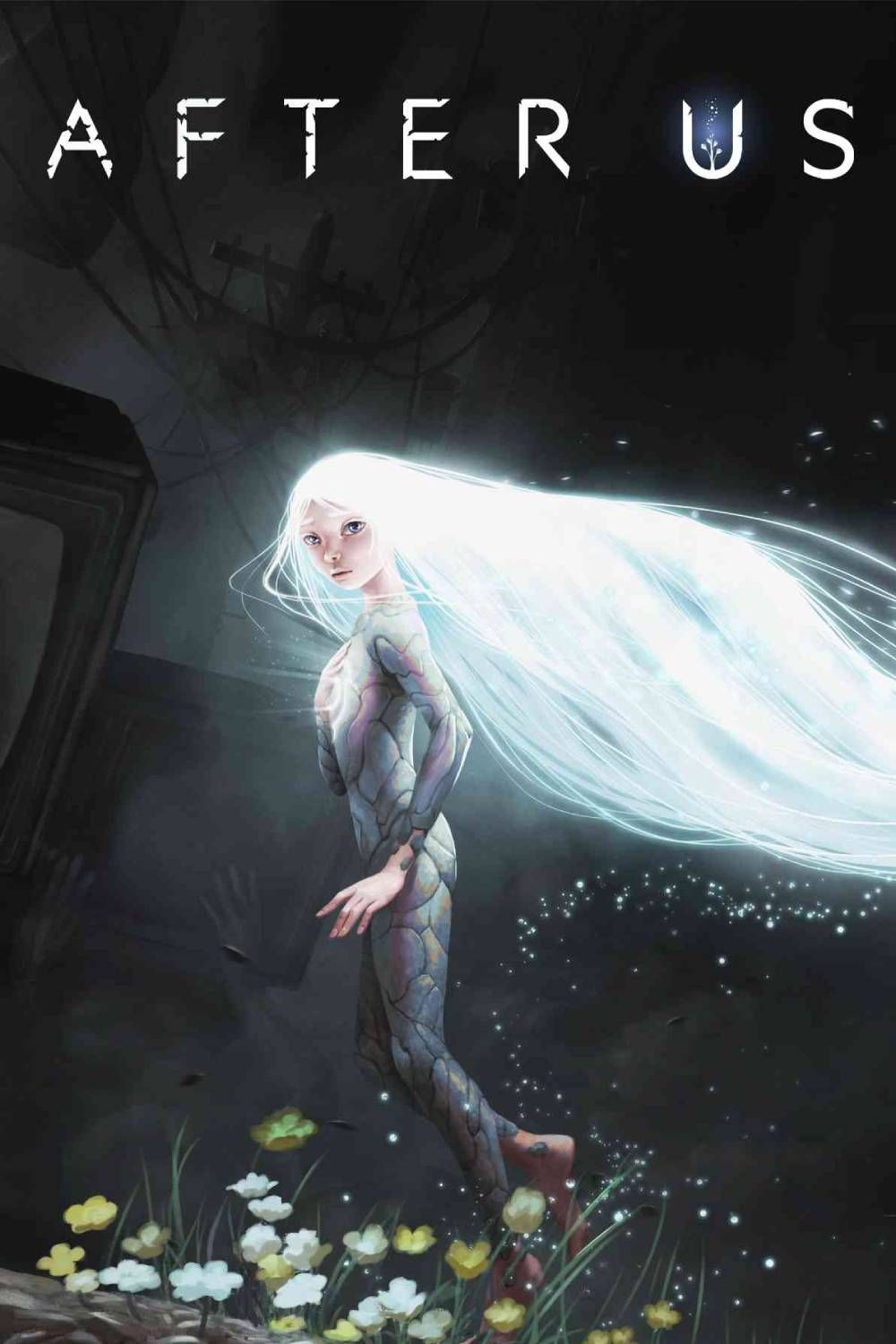
After Us
After Us is a puzzle platformer set in a world following the extinction of animals. Taking on the role of Gaia, the Spirit of Life, you must seek out their souls and save them.

